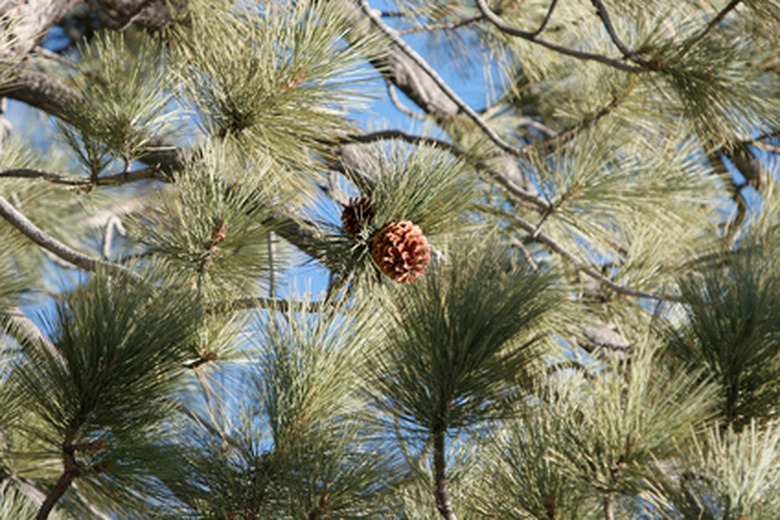The Importance Of Pine Trees
Pine trees are evergreen conifers that are native to the Northern Hemisphere, although few species grow in warm climates of the tropics. These trees are used for ornamental purposes, as privacy screens and windbreakers and for natural boundary walls or property dividers. The importance of these trees cannot be ignored because their wood, needles, cones and nuts are used for a host of other purposes.
Features
Coniferous pine trees belong to the genus Pinus. Depending on the species, these trees grow over 100 feet tall and spread over 50 feet wide. Although most species feature thick barks, there are some with delicate, flaky barks. These disease- and pest-resistant trees have pine needles instead of standard leaves that form a dense canopy that prevents sunlight and rain from seeping through to the ground below.
- Pine trees are evergreen conifers that are native to the Northern Hemisphere, although few species grow in warm climates of the tropics.
- These disease- and pest-resistant trees have pine needles instead of standard leaves that form a dense canopy that prevents sunlight and rain from seeping through to the ground below.
Timber
The number of officially recognized pine tree species exceeds 90, including those in forests and dwarf varieties. Out of the known species, some are grown specially for timber that is graded in three qualities: higher, medium and low grade. Higher-graded qualities are used in the construction of expensive furniture, cabinets and paneling; medium-graded timber, valued for its strength and durability, is primarily used in the construction industry; low-grade timber is used for packaging material, particle boards and paper products.
Oil
Pine oil, valued for its antibacterial and aromatic properties, is extracted from twigs, needles and cones of pine trees. It contains acidic phenols that contain antiseptic properties. This oil is used for massages and aromatherapy and in perfumes and cosmetics. It cures skin ailments of many kinds including minor itching to serious scabies. Disinfectants that contain pine oil effectively remove fungi, mold and other bacteria.
- The number of officially recognized pine tree species exceeds 90, including those in forests and dwarf varieties.
- Pine oil, valued for its antibacterial and aromatic properties, is extracted from twigs, needles and cones of pine trees.
Landscape Beauty
Mature pine trees add a stately appearance to the area, which explains their use as ornamental trees. Their graceful form and symmetrical shape stand out and draw attention, especially in the winter months when surrounding deciduous trees lose foliage and the area is covered with a thick blanket of snow. The long, delicate needles and beautifully shaped pine cones form a striking contrast against trees with regular foliage in the summer months. Many larger species make beautiful ornamental plantings in large gardens and parks, while the dwarf cultivars are grown in smaller areas such as home gardens. Some species are specifically grown as Christmas trees. Pine boughs are used for winter decoration due to their pleasant aroma and green color, and the durable cones are widely used for craft projects.
Pine Nuts
Some species of pines feature large seeds called pine nuts that are widely used in cooking and baking. This soft, white inner bark wrapped between the woody outer bark is packed with vitamins including A and C. It is sliced and eaten raw or ground into powder for use in soups and stews.
- Mature pine trees add a stately appearance to the area, which explains their use as ornamental trees.
- Their graceful form and symmetrical shape stand out and draw attention, especially in the winter months when surrounding deciduous trees lose foliage and the area is covered with a thick blanket of snow.
Medicinal Use
According to author Jethro Kloss in "Back to Eden," pine seeds can allegedly cure chest ailments including bronchitis, tonsillitis and coughs. Boiling cones in water and drinking the solution fights influenza and minor colds. Native Americans dried pine bark and ground it into a powdery form to use in bread to cure throat and lung afflictions.
References
- Environmental Protection Agency: Pineoil
- Tree Help: Pine
- "Back to Eden"; Jethro Kloss; 1997
